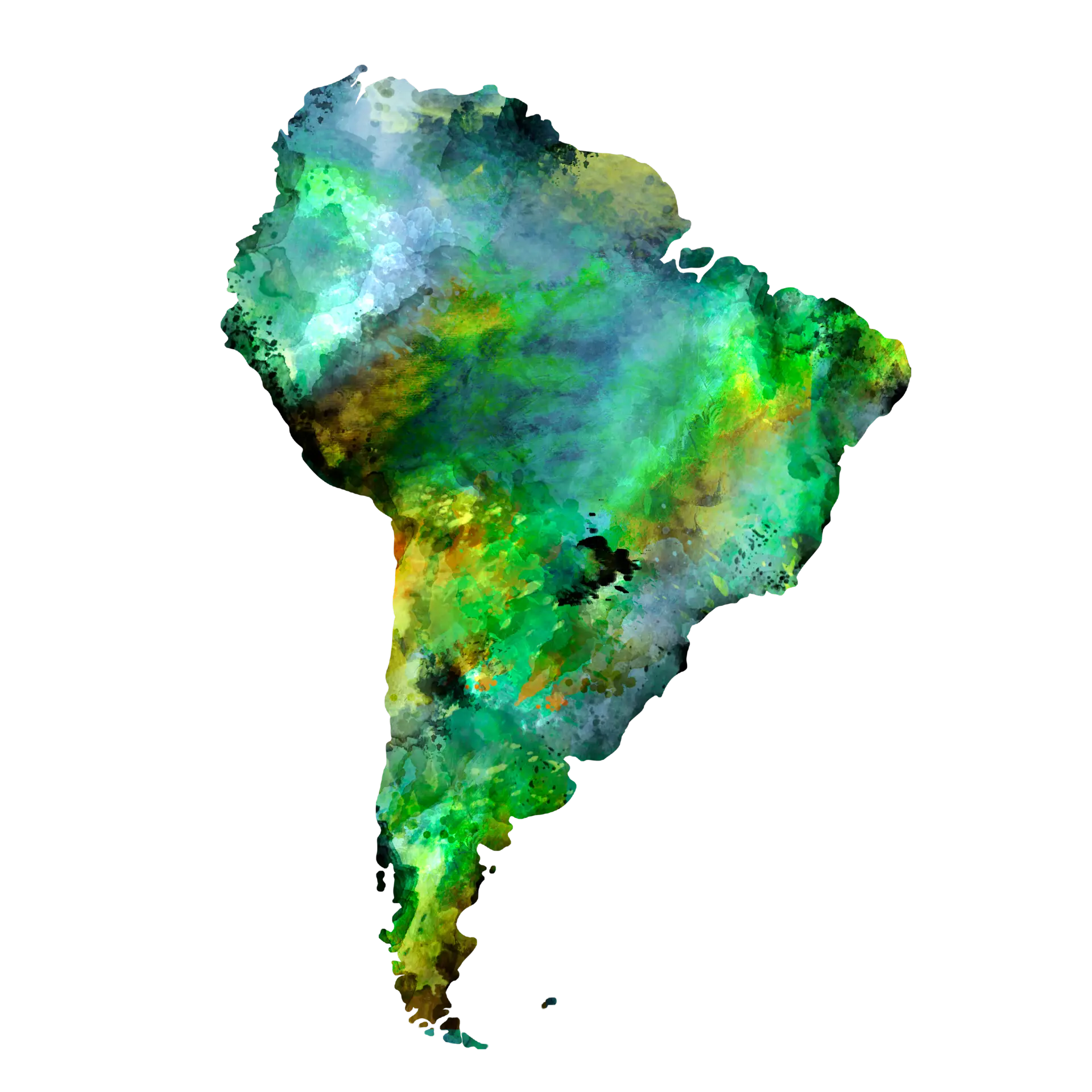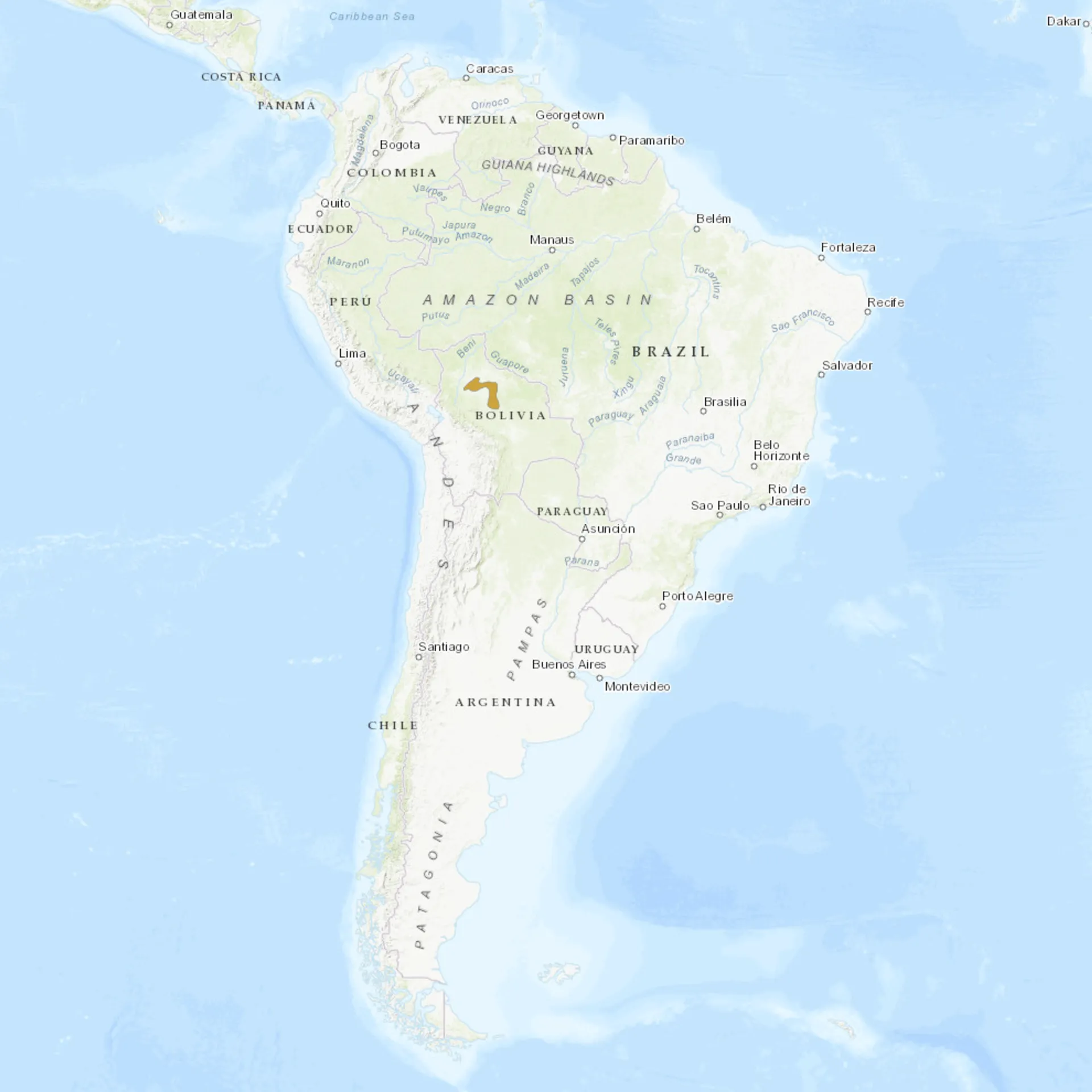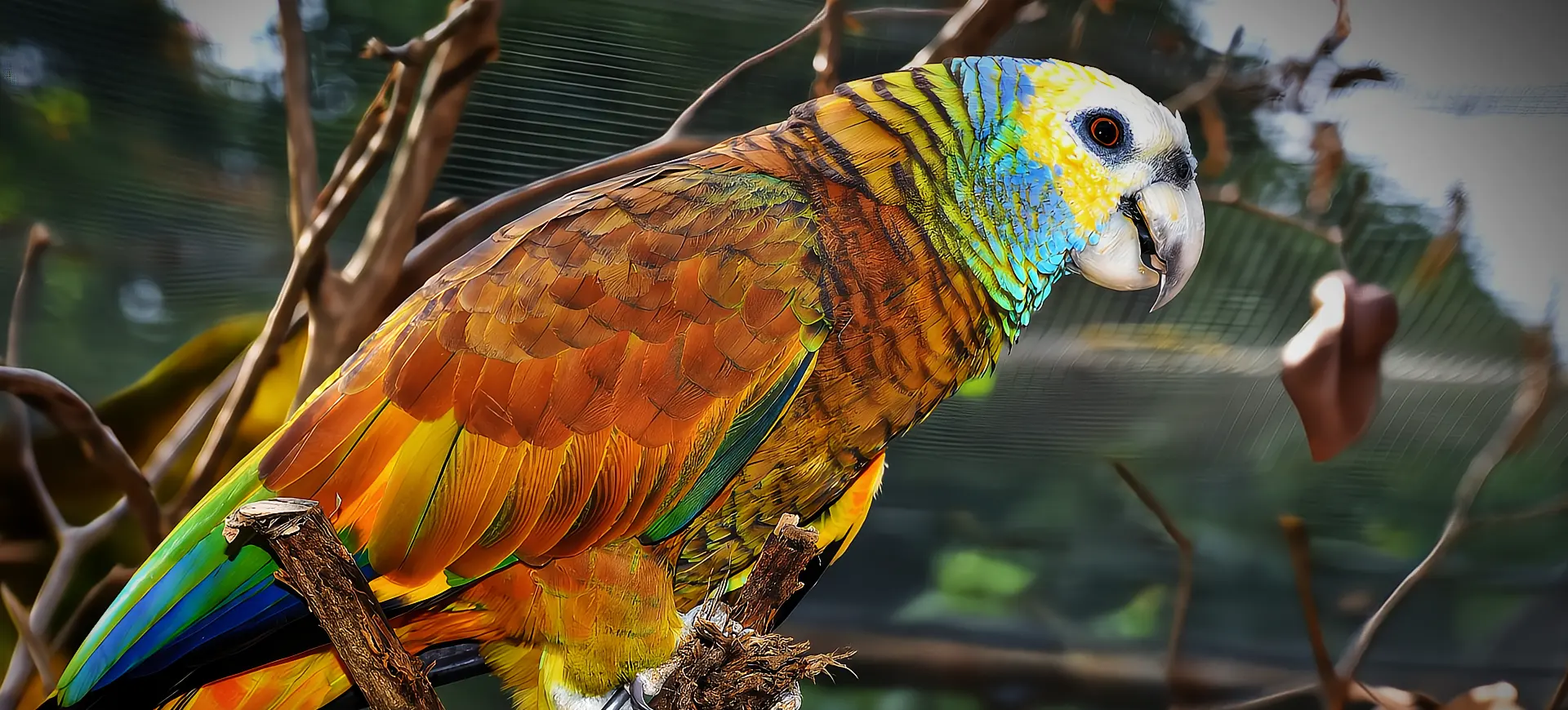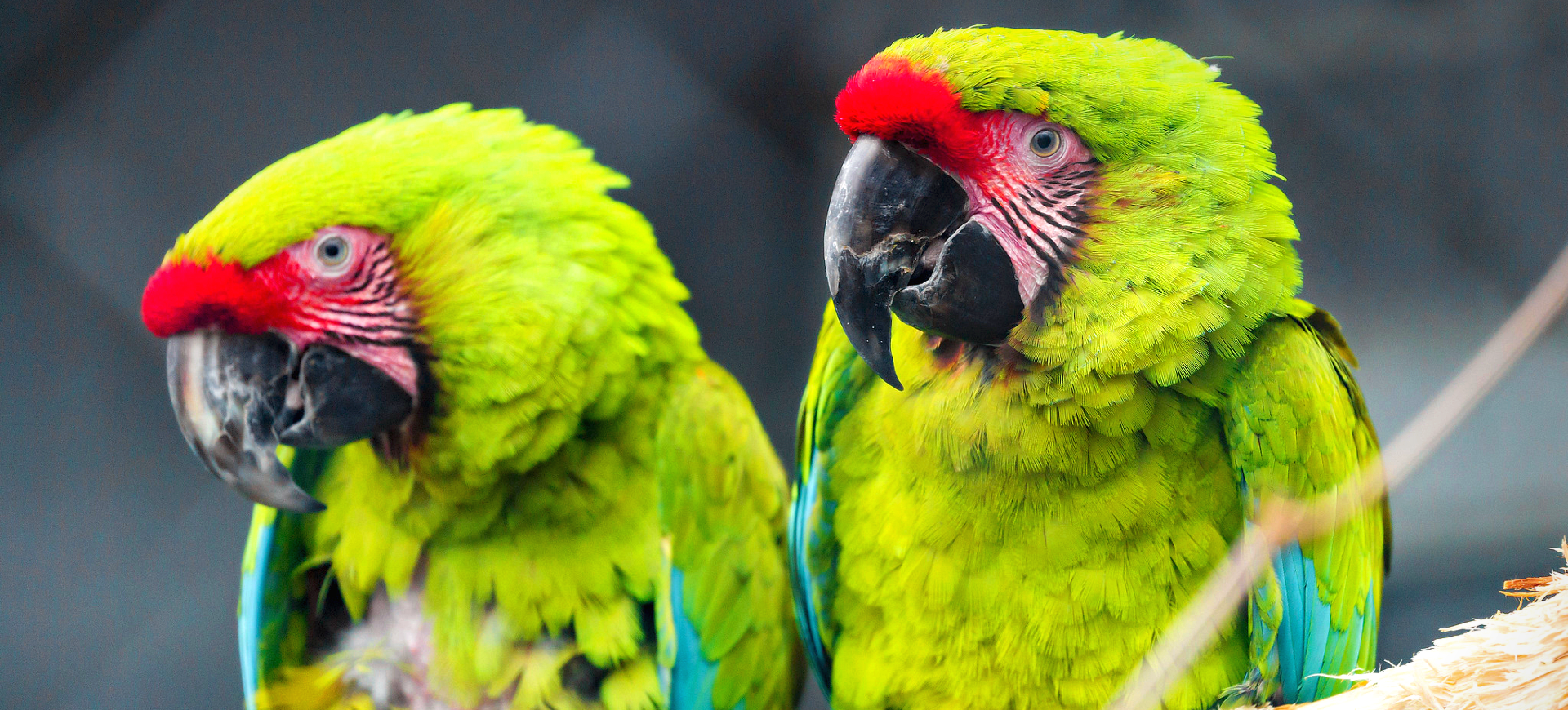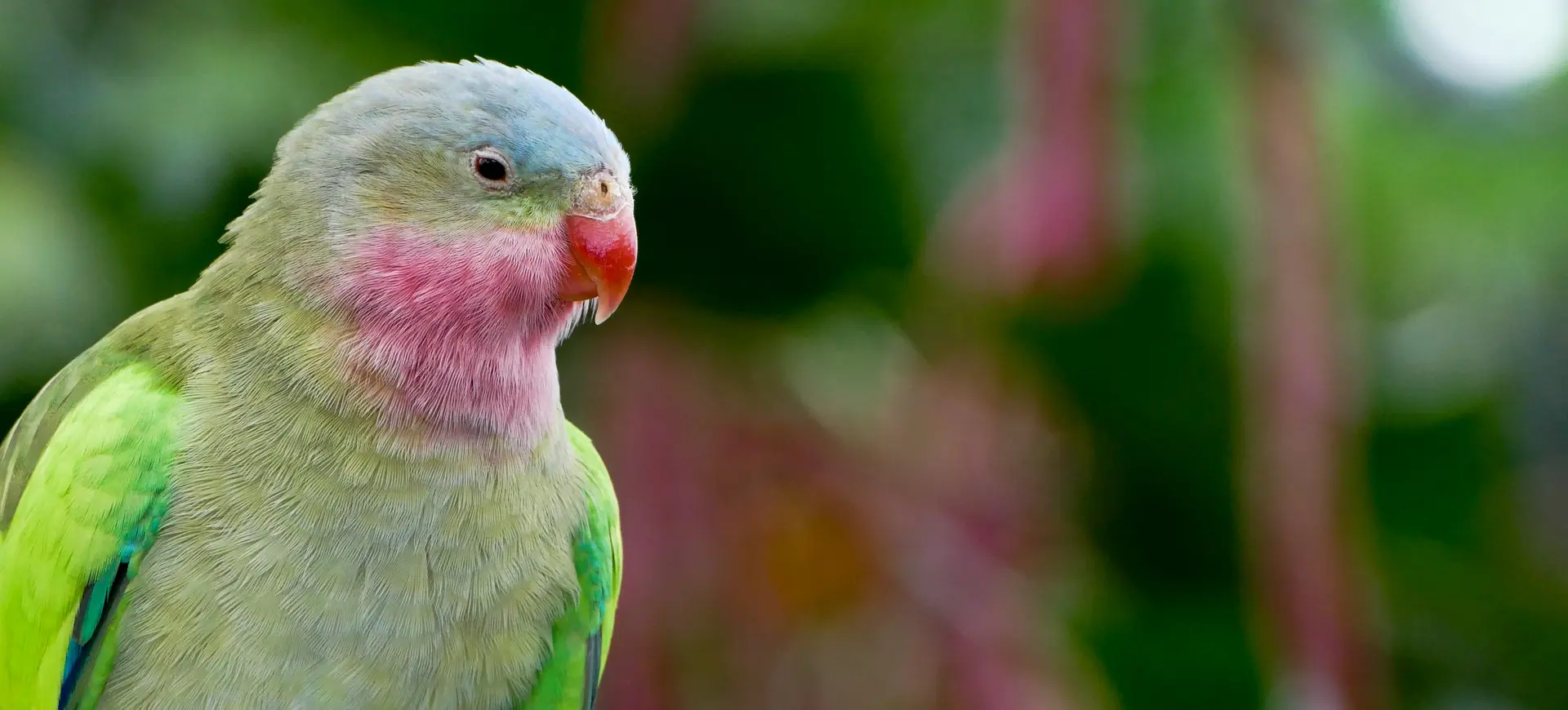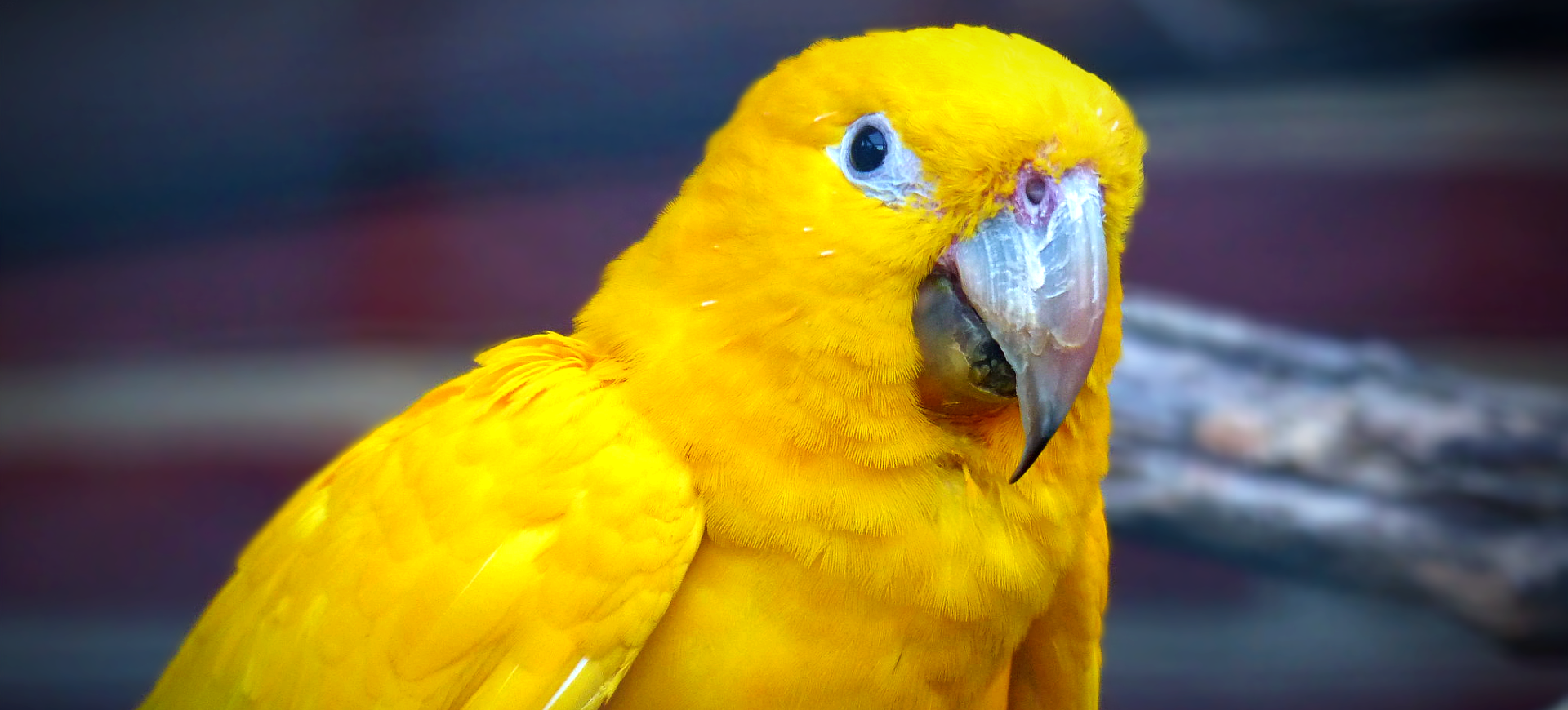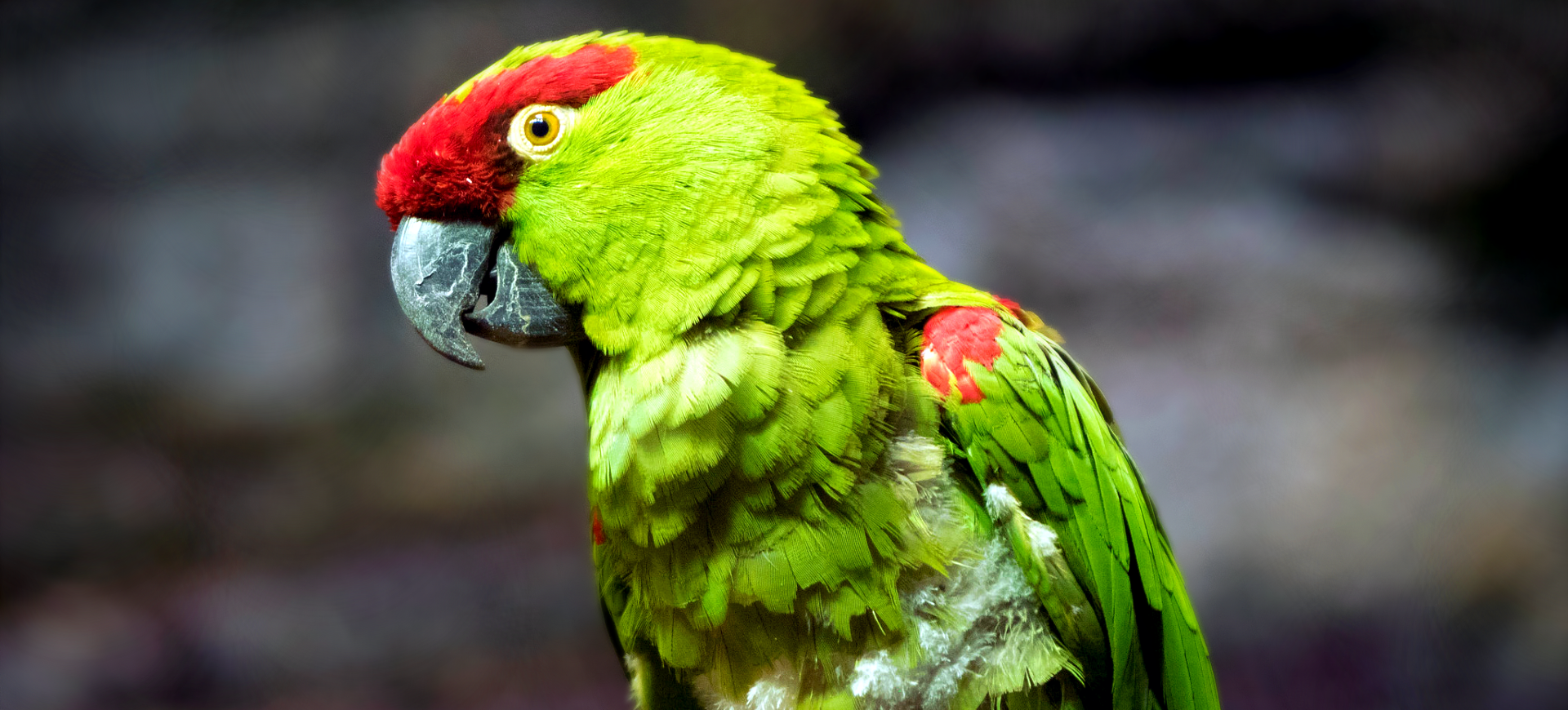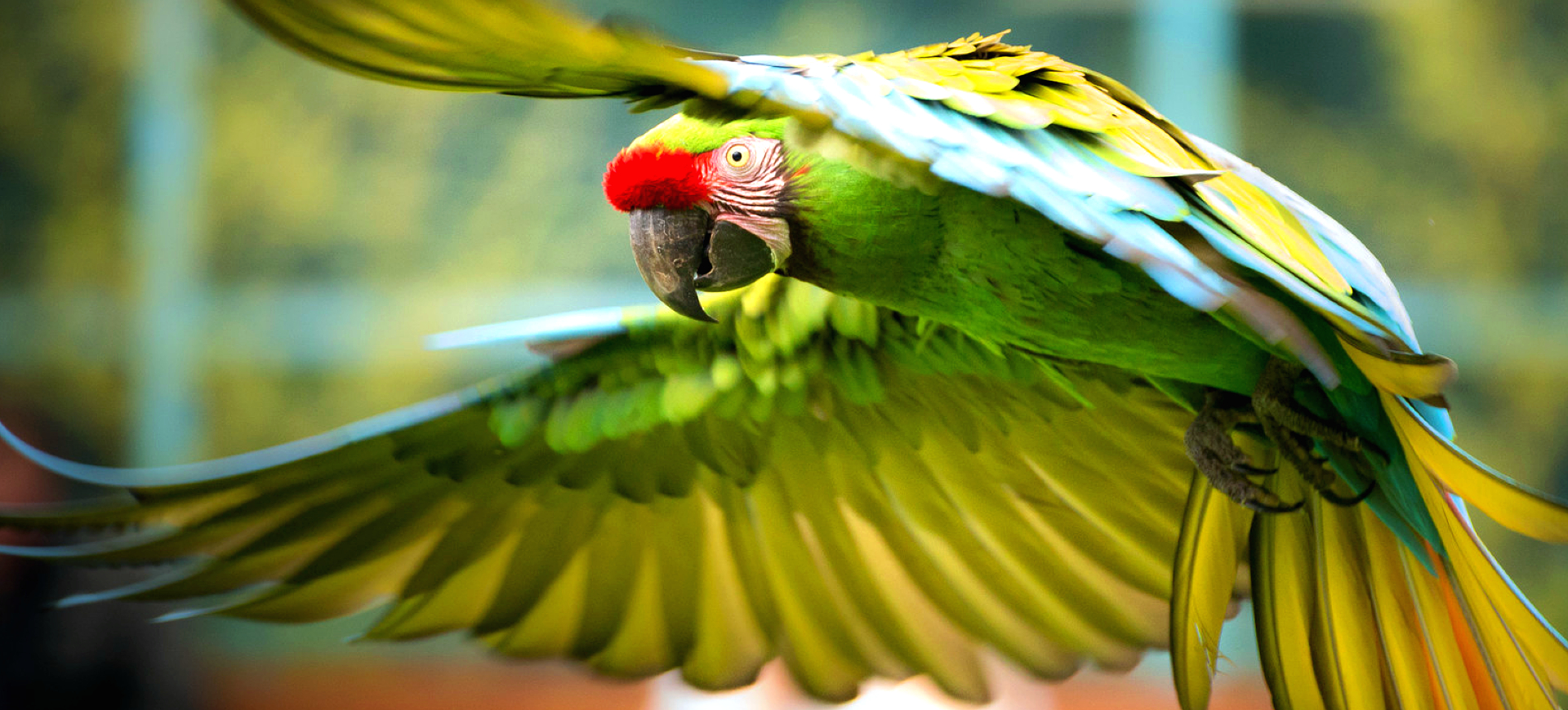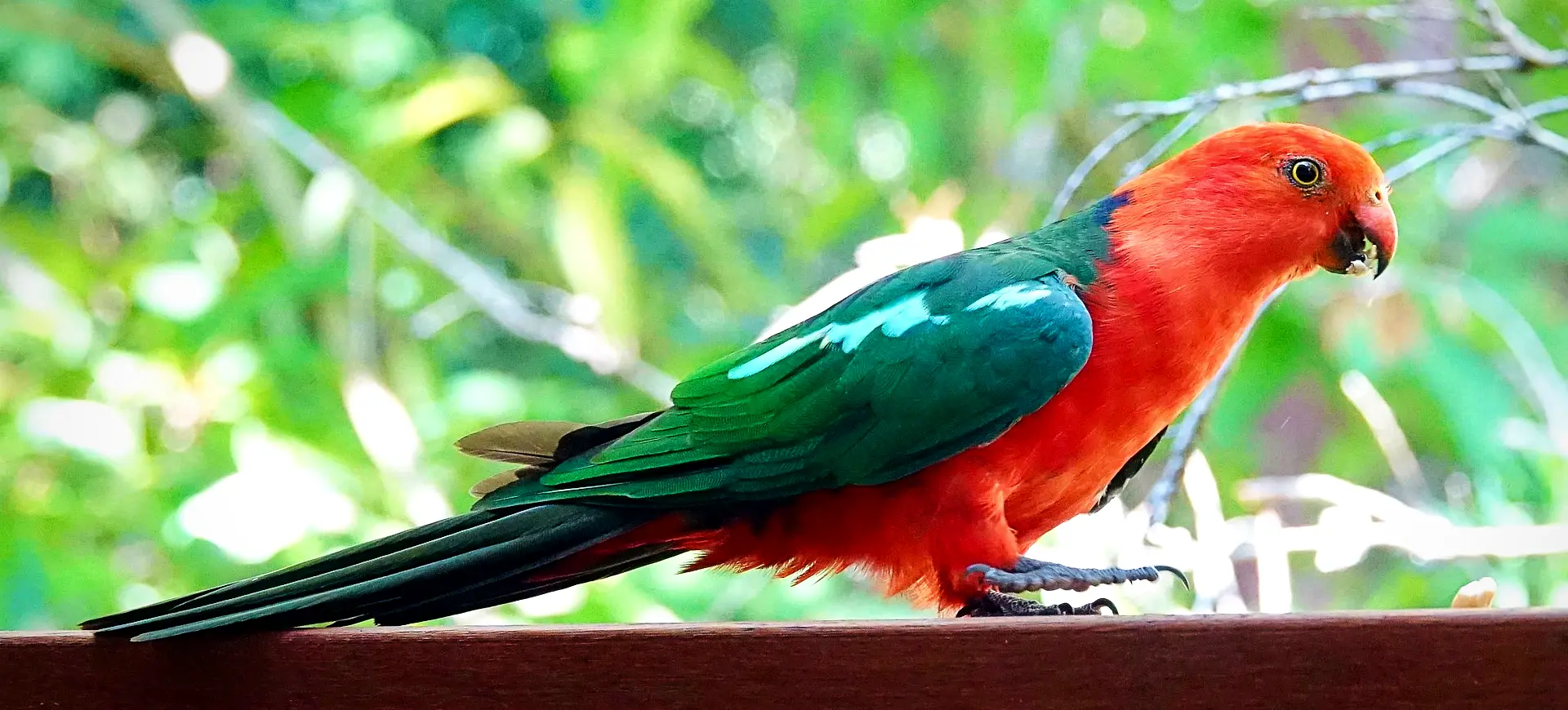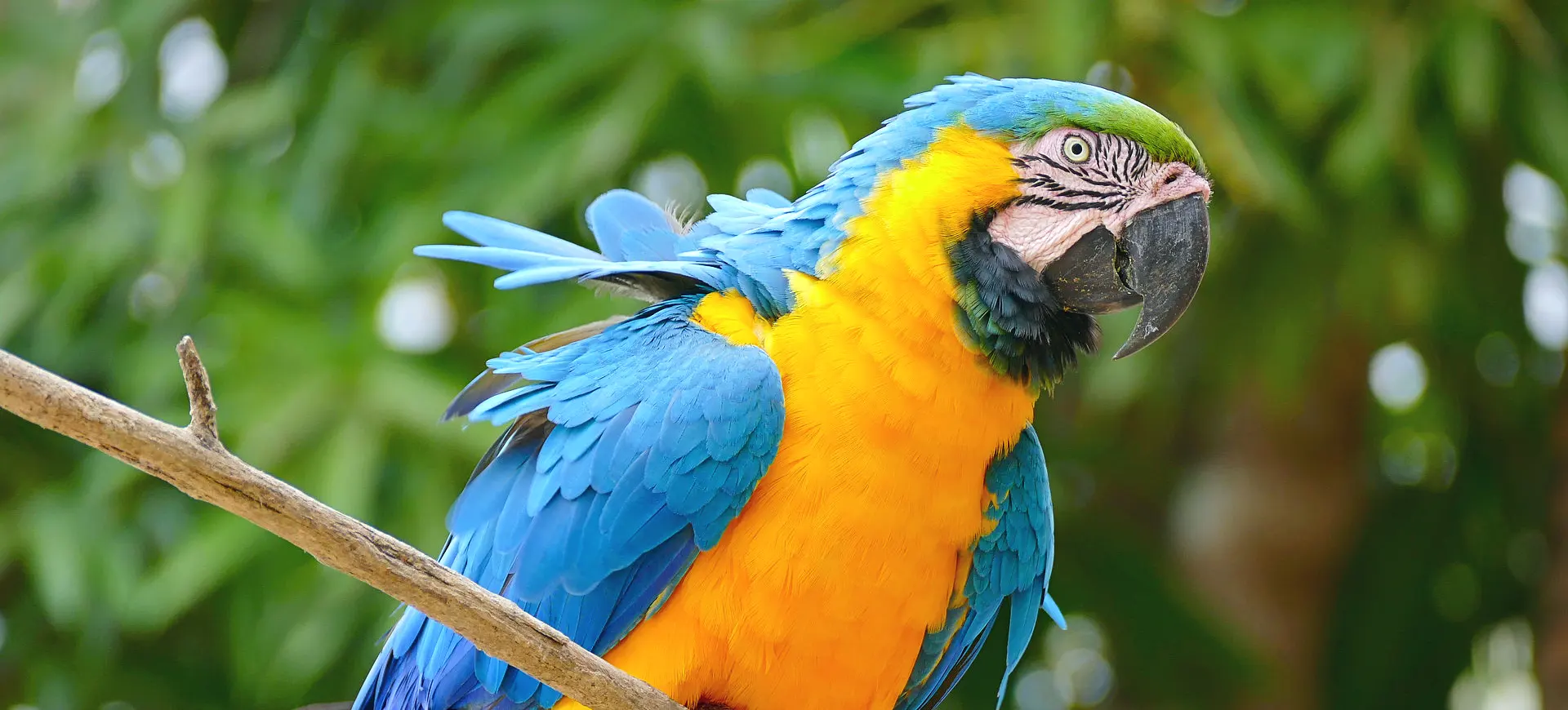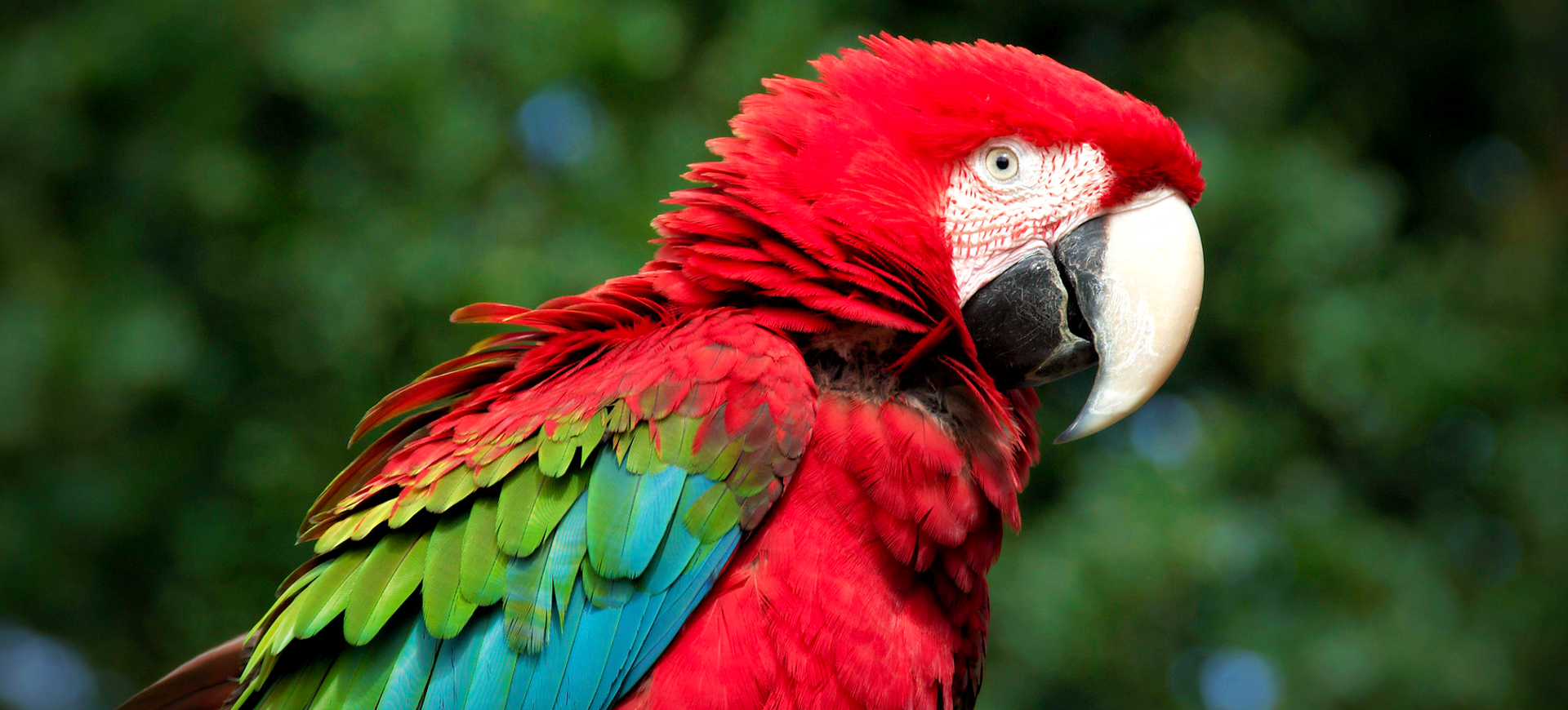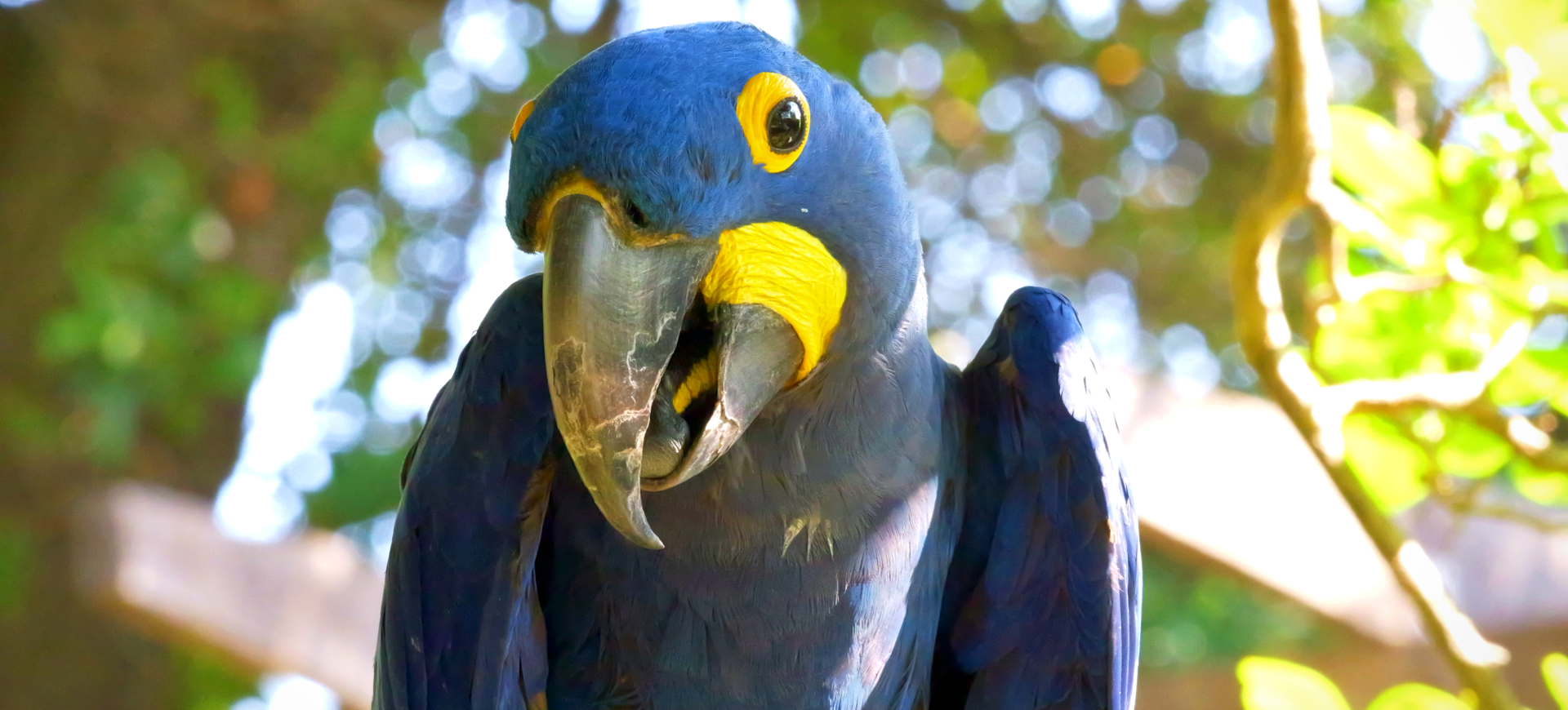Overview
The Blue-throated Macaw, known for its striking blue plumage and vibrant appearance, is a large parrot native to Bolivia. It is less known than its relative, the Blue-and-yellow Macaw, but it is equally captivating. These birds are characterized by their vivid blue feathers on the throat, cheeks, and wings, contrasted with a bright yellow underbelly. They have a distinctive bare patch of skin around their eyes and bill, a typical feature of many macaw species.
Blue-throated Macaws are known for their social and affectionate nature, often seen in pairs or small groups. They have a reputation for being playful and intelligent, able to mimic human speech and sounds. In the wild, these macaws prefer to nest in the cavities of large trees, which provide protection and space for their young. Their vocalizations are loud and varied, including squawks and screams, which play a role in communication within the species.
The species faces significant threats from habitat loss and the illegal pet trade. Due to these pressures, the Blue-throated Macaw is listed as Critically Endangered by the International Union for Conservation of Nature (IUCN). Conservation efforts are underway, including habitat protection and breeding programs, to ensure the survival of this remarkable species.
Taxonomy
Kingdom
Phylum
Class
Order
Family
Genus
Species
Type
Current distribution:
According to the latest data, the Blue-throated Macaw is found exclusively in the wild in Bolivia. Its range is restricted to a small area in the lowlands of north-central Bolivia, in the Llanos de Moxos region. This area is characterized by its seasonally flooded grasslands and palm savannas. The species' distribution is highly fragmented due to habitat loss and degradation.
In recent years, the range of the Blue-throated Macaw has been further reduced. They are now mostly found in protected areas and reserves where conservation efforts are focused. Despite these protections, the remaining wild population is small and vulnerable. The exact number of individuals in the wild is difficult to determine due to their elusive nature and fragmented habitat.
Physical Description:
The Blue-throated Macaw is a visually stunning bird with primarily turquoise-blue plumage. The intense blue coloration covers its throat, cheeks, and wings, while the underparts are a bright golden yellow. The face features a distinctive patch of bare skin, a lighter color, and the bill is large and robust, typical of macaws. Their tails are long and tapered, adding to their graceful appearance in flight.
Adult Blue-throated Macaws are relatively large, with their size being one of their distinguishing characteristics. Their feathers are slightly iridescent, which becomes particularly noticeable in sunlight. The legs are strong and designed for grasping, as these birds are adept climbers and spend much of their time in trees. The sexual dimorphism in this species is minimal, with males and females appearing very similar in size and coloration.

Lifespan: Wild: ~30 Years || Captivity: ~50 Years

Weight: Male: 2.2-3.3 lbs (1-1.5 kg) || Female: 2.2-3.3 lbs (1-1.5 kg)

Length: Male: 33 in (85 cm) || Female: 33 in (85 cm)

Height: Male & Female: 34 in (85 cm)

Wingspan: Male & Female: 36-40 in (91-102 cm)

Top Speed: 35 mph (56 km/h)
Characteristic:
Native Habitat:
The Blue-throated Macaw is native to a small area of north-central Bolivia, primarily in the Beni Department. Their habitat is characterized by seasonally flooded savannas, palm groves, and isolated forest patches known as “islands.” These environments provide the necessary resources for their survival, including food and nesting sites. The macaws are particularly associated with palm forests, offering food and nesting opportunities.
The climate in their native habitat is typically tropical, with a distinct wet and dry season. During the wet season, large areas become flooded, creating a unique ecosystem where these birds thrive. They are adapted to this environment, with behaviors and feeding patterns that align with the seasonal changes; despite their adaptability, habitat loss and fragmentation threaten their survival in these regions.
Climate Zones:
Biomes:
Biogeographical Realms:
Continents:
Countries:
Diet:
Diet & Feeding Habits:
Blue-throated Macaws are primarily herbivores, with their diet in the wild consisting largely of fruits, seeds, and nuts. They prefer the fruits of specific palm trees, which are abundant in their native habitat. Their strong beaks are perfectly adapted for cracking open hard shells of nuts and seeds. This feeding behavior is essential for the ecosystem, as it plays a seed dispersal role.
In addition to their natural diet, these macaws have been observed consuming clay from riverbanks. This behavior, known as geophagy, is thought to help detoxify their diet and supplement their mineral intake. Their diet must be carefully managed in captivity to ensure they receive all necessary nutrients. They are often fed a mix of fruits, vegetables, nuts, and specialized pellets to mimic their natural diet as closely as possible.
Mating Behavior:
Mating Description:
The Blue-throated Macaw is known for its monogamous mating system, where pairs form strong, long-lasting bonds. These bonds are reinforced through mutual preening and shared roosting. During the breeding season, pairs engage in elaborate courtship displays, including loud calls, aerial acrobatics, and feather displays. These behaviors strengthen the pair’s bond and are crucial for successful reproduction.
Nesting typically occurs in tree cavities, where the female lays a clutch of two to three eggs. The female primarily incubates the eggs, while the male provides food and protection. The chicks are altricial, meaning they are born blind and featherless, requiring extensive parental care. Both parents feed and care for the young until they fledge. The family group may stay together after the young have fledged, maintaining strong social bonds.
Reproduction Season:
Birth Type:
Pregnancy Duration:
Female Name:
Male Name:
Baby Name:
Social Structure Description:
Blue-throated Macaws are social birds, often seen in pairs or small family groups. They form strong pair bonds with their mates, typically maintained for life. Outside the breeding season, they may congregate in larger flocks, especially in areas with abundant food resources. These gatherings are noisy and lively, with birds communicating through various calls.
The social structure of the Blue-throated Macaw is crucial for their survival, providing protection, mating opportunities, and assistance in finding food. The birds engage in mutual preening and share food, strengthening social bonds. Despite their social nature, they require large territories and can be territorial, particularly during the breeding season. Understanding their social structure is important for conservation efforts, as it affects their habitat needs and behavior.
Groups:
Conservation Status:
Population Trend:
The population of Blue-throated Macaws in the wild is critically low, making them one of the most endangered macaw species. Current estimates suggest only a few hundred individuals are remaining. This small population is fragmented across their range, exacerbating their conservation challenges. The primary threats to their survival are habitat loss due to agricultural expansion and the illegal pet trade.
Despite the dire situation, there are some positive signs. Conservation programs have successfully increased local awareness and protecting the species. Breeding programs in captivity are also helping to bolster the population. However, the long-term survival of the Blue-throated Macaw depends on continued and enhanced conservation efforts, habitat protection, and local community engagement.
Population Threats:
The primary threat to the Blue-throated Macaw is habitat loss, largely due to land conversion for agriculture and cattle ranching. The destruction and fragmentation of their habitat reduce the availability of food and nesting sites, which are critical for their survival. Additionally, the illegal pet trade has historically significantly impacted their population, with many birds being captured for sale on the black market.
Other threats include climatic changes affecting their habitat and food sources, predation by natural predators, and competition with other bird species for nesting sites. The small size of the remaining population also makes them vulnerable to diseases and genetic bottlenecks, which can further reduce their numbers and genetic diversity. Addressing these threats requires a multifaceted approach involving habitat protection, law enforcement, and community engagement.
Conservation Efforts:
The Blue-throated Macaw’s conservation efforts focus on habitat protection, research, and local community involvement. Several protected areas and reserves have been established in their range to safeguard the remaining populations and their habitat. These areas provide a refuge from habitat destruction and illegal trade activities. Conservation organizations are working with local communities to promote sustainable land use practices that benefit the people and the macaws.
Captive breeding programs have also been established to increase the population and potentially reintroduce birds into the wild. These programs are crucial for maintaining genetic diversity and providing a safety net for the species. Education and awareness campaigns are helping to reduce the demand for wild-caught birds and promote the protection of the species. Ongoing research is essential to understand their ecology, behavior, and needs, which inform conservation strategies.
Additional Resources:
Fun Facts
- The Blue-throated Macaw is also known as the “Canine Macaw” or “Blue-cheeked Macaw.”
- Unlike many parrot species, blue-throated macaws do not have green plumage on any part of their body.
- They can mimic human speech and other sounds, a trait that has contributed to their popularity in the pet trade.
- Their strong beaks can easily crack open hard nuts and seeds, which make up a significant portion of their diet.
- These macaws are known for their playful behavior and can often be seen hanging upside down or playing with objects.
- The Blue-throated Macaw’s vibrant colors are thought to play a role in communication and mate selection.
- They have a powerful flight, with a top speed of up to 35 mph (56 km/h).
- Conservation efforts for this species include habitat protection, captive breeding, and local community engagement.
- The species’ scientific name, Ara glaucogularis, refers to the blue (glaucous) color of their throat area.
- Despite their bright colors, they can be quite difficult to spot in the wild due to their small numbers and elusive nature.

